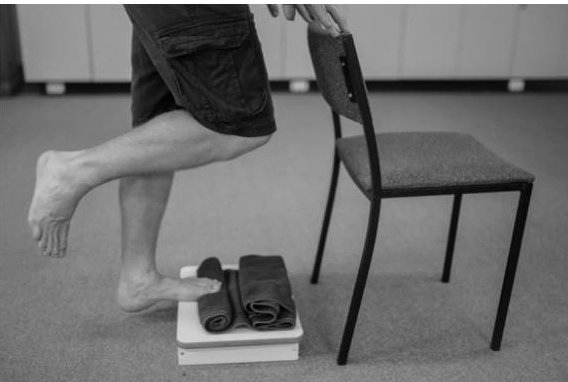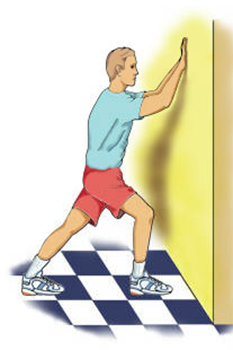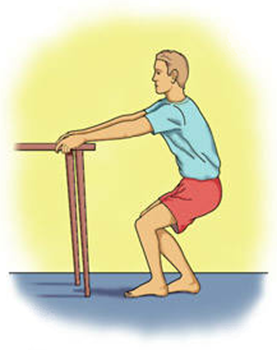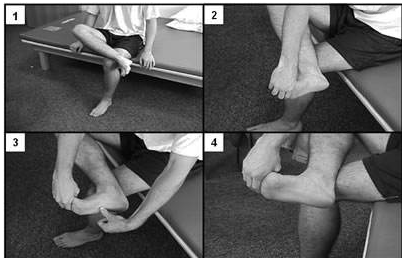Plantar Fasciitis Treatment Plan
Plantar Fasciitis Overview
The plantar fascia is a dense, wide band of fibers that starts at the inner-bottom part of your heel bone and radiates along the bottom of the foot towards the toes.
In normal function, the plantar fascia tissue helps maintain your arch as your foot rolls forward on the toes – like a bowstring pulling the ends of a bow together.
Plantar fasciitis is the name for the painful condition caused by an injured plantar fascia – most typically degeneration caused by micro-traumatic injury to the plantar fascia fibers from excessive loading.
Nearly 90% of patients with plantar fasciitis will improve with the non-operative interventions outlined below and can avoid the risks associated with more invasive treatment. Unfortunately, these treatments may require weeks to even months to reach full impact, so patience and persistence are key to success!
Plantar Fasciitis Treatment Plan
Rest
As you focus on recovery, try to avoid activities that aggravate your plantar fasciitis symptoms
Physical therapy
Therapy specifically directed for plantar fasciitis, with an emphasis on eccentric exercises (see below)
Stretching
See the attached tips on stretching exercises
Icing/Massage
Freeze a disposable water bottle and roll it under your heel & foot (no more than 20 minutes per hour)
NSAIDs
You may use a course of anti-inflammatory medications aka NSAIDs like Advil, Ibuprofen, or Motrin. You may need to take the drug for a couple of weeks before notable changes are seen.
Night Splints
Night splints may help avoid plantar fascia tightening overnight and reduce the pain.

Eccentric Heel Raises: (3 sets x 20 repetitions, every day)
- Stand barefoot with both feet on the edge of a stair, step, or box, with your heels extending over the edge and a rolled-up towel resting beneath the toes of the affected foot (fig 1).
- Put your hands on a countertop, stair railing, chair, or any secure structure that will allow you to maintain balance.
- Using the unaffected foot, perform a single-leg heel raise by pushing down on the step as if it were the gas pedal of a car. (Note: If both feet are affected, you will perform a heel raise using both feet to a count of 3 seconds up.)
- Once you are up on your toes, you will shift your weight to the affected foot. (Note: If both feet are affected, pick one foot to perform step 5 for each repetition.)
- Slowly lower the affected heel to the starting position to a count of 3 seconds down.
- Perform 12 repetitions of this exercise per set. The goal is to perform 36 repetitions total, every other day. It is recommended that you split this up by performing 3 sets of 20 repetitions, preferably spread out over the course of the day (one set each morning, midday, and night).
- If you are able to complete 20 repetitions fairly easily, you may add weight in 5-10 lb. Increments.
Adjunct Treatment

Fig 2
In one exercise (fig 2) you lean forward against a wall with one knee straight and heel on the ground. Your other knee is bent. Your heel cord and foot arch stretch as you lean. Hold for 10 seconds, relax, and straighten up. Repeat 20 times for each sore heel. It is important to keep the knee fully extended on the side being stretched.

Fig 3
In another exercise (fig 3) you lean forward onto a countertop, spreading your feet apart with one foot in front of the other. Flex your knees and squat down, keeping your heels on the ground as long as possible. Your heel cords and foot arches will stretch as the heels come up in the stretch. Hold for 10 seconds, relax, and straighten up. Repeat 20 times.

Plantar Fascia-Specific Stretching Program (see fig 4)
- Cross your affected leg over your other leg.
- Using the hand on your affected side, take hold of your affected foot and pull your toes back towards shin. This creates tension/stretch in the arch of the foot/plantar fascia.
- Check for the appropriate stretch position by gently rubbing the thumb of your unaffected side left to right over the arch of the affected foot. The plantar fascia should feel firm, like a guitar string.
- Hold the stretch for a count of 10. A set is 10 repetitions.
You can perform these stretches daily. It is recommended that you perform these stretches before taking the first step our of bed in the morning and before standing after a period of prolonged sitting.

